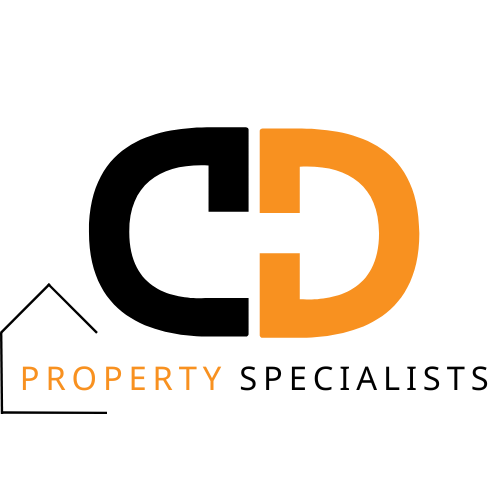A New Era of Rental Safety: What Awaab’s Law Means for Social Housing
- Circle Doors

- Oct 30
- 3 min read

From 27 October 2025, a landmark regulation called Awaab’s Law begins to transform the landscape of social housing in England — putting tenants’ safety and health front and centre. GOV.UK+2housing-ombudsman.org.uk+2
Why It Matters
The law is named after Awaab Ishak, a two-year-old child who died in 2020 after prolonged exposure to mould in his home. His case exposed catastrophic failures in the housing system and galvanised change. Shelter England+2Housing Hub+2For too many tenants, persistent damp, mould or other hazards have been ignored, delayed or treated as low priority. Awaab’s Law forces a new standard.
What the Law Requires (Phase 1)
At this first stage, the law applies to social housing landlords and sets strict timeframes for key hazards: GOV.UK+2Housing Hub+2
Emergency hazards (for example: dangerous electrical faults, major leaks, damaged external doors/windows that present an immediate risk) must be investigated and made safe within 24 hours of the landlord being aware. Housing Hub+1
Significant damp and mould hazards must be investigated within 10 working days, and then made safe within a further 5 working days after the investigation concludes. GOV.UK
After investigation, landlords must give tenants a written summary of findings and planned actions within 3 working days. GOV.UK+1
If a home can’t be made safe in the prescribed time, an alternative accommodation must be offered to the tenant. GOV.UK+1
Who is Covered?
Currently the law applies to social housing (council homes, housing associations) with tenancy agreements. GOV.UK+1It does not yet apply to all private rented homes — although the law is designed to be extended in future phases. RPC+1

What’s Coming Next
This is only phase 1. The government plans to widen the scope in phases:
2026: other major hazards such as excess cold/heat, fire risk, electrical risks, structural collapse. brownejacobson.com
2027: remaining hazards under the Housing Health & Safety Rating System (HHSRS) excluding overcrowding. housing-ombudsman.org.uk+1
What This Means for Landlords and Property Managers
Landlords in the social sector must act now. As one legal commentary notes:
“Ensure all maintenance staff and contractors are aware of the 29 hazards … Review contractor relationships … Ensure record-keeping is adequate …” brownejacobson.com+1
For many organisations the challenge will be ramping up repair capacity, tightening turnaround of repairs, and improving communication with tenants.
Why This Matters for Tenants
For tenants, this law strengthens rights and accountability:
If you report a hazard covered by the law, you now have clear timeframes within which your landlord must act.
You will receive written feedback about investigations and planned works.
If the landlord fails to comply you have routes to complain (including via the Housing Ombudsman) or take court action. GOV.UK+1
Ultimately it helps make homes safer and more liveable — reducing risks to health, especially for the vulnerable or those with existing conditions.
Why Should You Care — Especially in the Property Management / Lettings Sector?
If you’re in the lettings or property management business (including landlords of social housing or providers that partner with them), this law sets a new benchmark. Going forward:
Response times will become audit-points.
Tenant engagement and clear communication become even more critical.
Failure to respond may lead to legal risk, reputational damage, or regulatory penalties.
For those drafting tenancy agreements or compliance documentation (which links with your work for Circle Doors), this is a perfect example of how your templates need to reflect current regulation.
Action Steps You Can Take Right Now
Here are some suggestions you might consider, especially with your property-management work in mind:
Review your current reactive repairs policy: does it allow for 24 hour response to emergencies, and 10/5 working day for mould/damp?
Audit your stock: identify which properties have known issues with damp/mould and prioritise them.
Ensure contractors and supply chain are briefed on the new timeframes and obligations.
Update tenant communications: make sure tenants know how to report hazards, their rights under the law, and what to expect.
Update documentation and templates (e.g., inspection reports, tenant letters) to reflect the written-summary requirement.
Track and log all issues rigorously: date reported, date investigated, findings, actions taken, communication to tenant — this strengthens compliance and provides evidential backing.
Keep an eye on phase 2/3 developments — the scope of hazards will expand, so early preparation means you’re ahead of the curve.
Final Thought
Awaab’s Law marks a milestone — a move from vague obligations to statutory deadlines and clearer accountability. For tenants it offers meaningful protection; for landlords and property providers it is both a duty and an opportunity to raise standards, trust and performance.
In the world of lettings and compliance templates (which is very relevant to your expertise), reflecting this regulation proactively will help you position your service as up-to-date, trustworthy and future-ready.




Comments